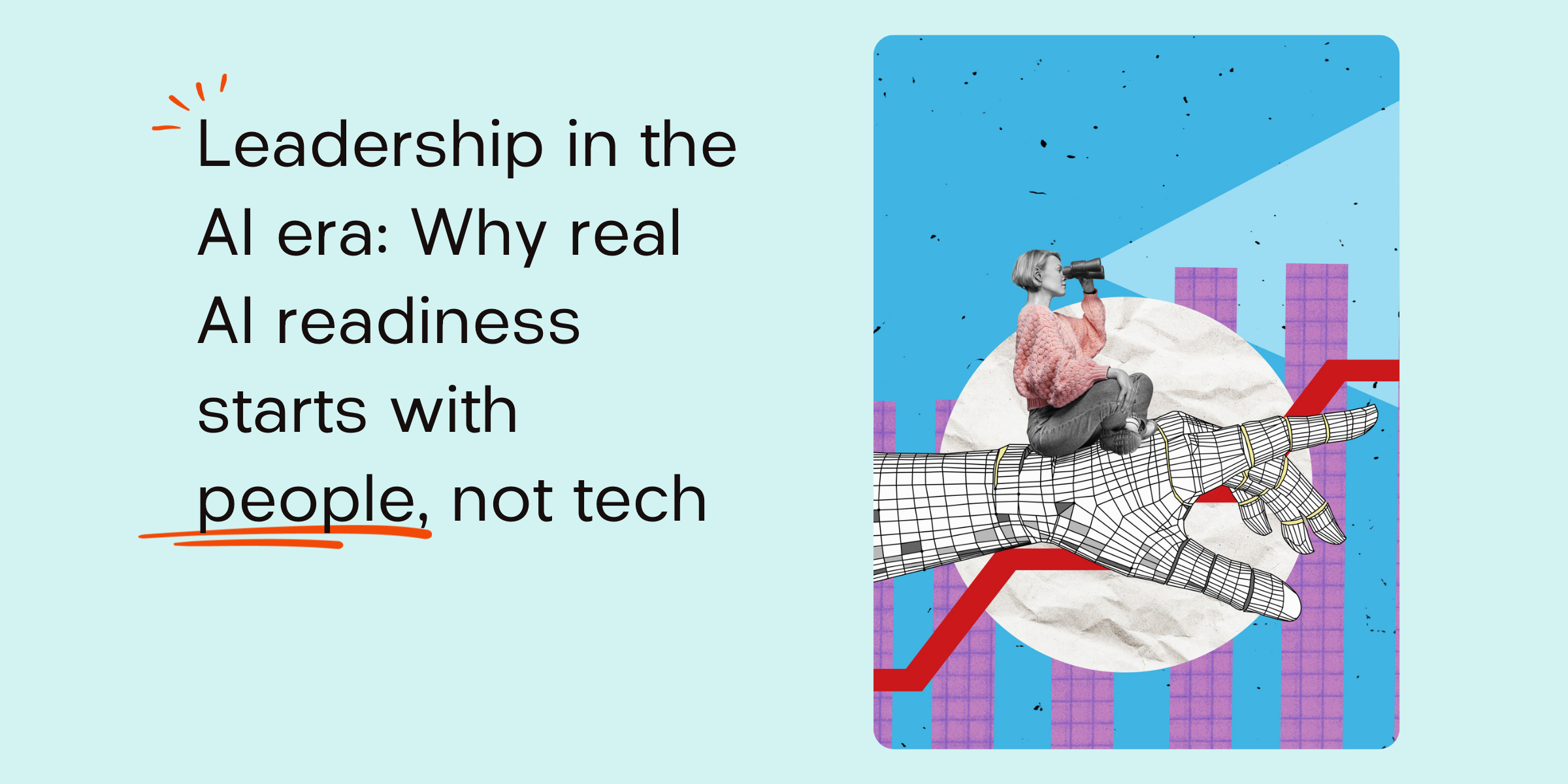Effective management is critical to running a successful organization. When it comes to managerial approaches, there are two that are commonly practiced at most companies: top-down and bottom-up.
But what are the benefits and potential drawbacks of top-down and bottom-up management?
And how do you get your managers – especially your newly promoted ones – to adopt and apply these different approaches?
We’ll address all these questions, and more, in this article.
What is top-down management?
Top-down management occurs when goals, projects, and tasks are determined among your company’s senior leaders – usually independently of their teams. These goals, projects, and tasks are then communicated to the rest of the organization.
Pros
- Most employees are familiar with this approach to management
- Likely to create alignment across goals, projects, and tasks
- Sets clear goals and expectations for the rest of the organization
- Frees up time for employees to focus on their work
Cons
- Employees may feel disconnected from the company’s mission and values
- Ineffective leadership can lead to poor decision making and unhappy employees
- May not encourage as much creativity or diversity of thought
Ideas to train managers for effective top-down leadership:
- Offer coaching and mentoring to help managers identify and improve on their hidden opportunities
- Provide a personalized learning track that lets managers choose what they want to focus on developing – whether that’s people management capabilities or communication skills
- Host virtual sessions for new managers to ensure everyone is aligned around the company culture, mission, and values
Looking for additional ideas to effectively train your new managers at scale?
What is bottom-up management?
Bottom-up management occurs when goals, projects, and tasks are informed largely by employee feedback. Employees are invited to participate in goal setting – sometimes simply with feedback, sometimes with a stake in the decision. These goals, projects, and tasks are then communicated by each team to senior leadership.
Pros
- Employees will be more aligned with the company culture, mission, and values
- Can lead to better engagement, performance, and productivity
- Employees can set goals that are aligned with their strengths
- Employees may have insights into the day-to-day processes that leaders don’t have visibility into
Cons
- Too much input can slow progress and create disorganization
- Employees may feel uncomfortable sharing feedback or ideas with managers and leaders
- Since employees don’t have access to high-level insights, they might not be able to identify and set goals that are truly aligned with the business’s mission and long-term vision
Ideas to train managers for effective bottom-up leadership:
- Offer leadership coaching and mentoring to help managers develop relevant skills, such as receiving and acting on employee feedback
- Create opportunities for managers to role-play scenarios with each other. This will help them practice navigating conversations with employees around goal setting, project management, and other relevant topics
The importance of utilizing both approaches to management
The needs of companies and employees are constantly shifting. That’s why it’s likely that your managers will need to adapt both the top-down and bottom-up approaches at different points of the organizational journey. Training managers to effectively apply both of these approaches will make it easier to transition between them as different needs arise. We’ll share examples of what this could look like below:
Example of top-down management in action
You work at a healthcare organization, where multiple teams are tackling a project that will have significant implications on the bottom line, as well as for medical patients who use your services. As a result, there are a lot of legalities and regulations that need to be carefully addressed.
In this type of situation, your managers may want to take on more of a top-down leadership role. Since the stakes are quite high, directions should be coming straight from executives – who likely have the most insight into the project. It’s also critical to have as much alignment as possible across teams, since it’s easy for wires to cross on such a complex undertaking.
Example of bottom-up management in action
Your engineering and product teams are working on a new feature for customers. The purpose of this project is to make the lives of your users easier and strengthen your relationship with them.
In this scenario, it makes sense for your managers to adopt a bottom-up management approach. Since your engineers are familiar with your company’s technological capabilities, and your product managers will have the best sense for what customers actually want, their insights will likely be more valuable than those from the Head of Engineering, who may not have the same level of visibility.
Top-down and bottom-up management both bring value to the table. What’s more important is making sure your managers are trained and aligned on how to put each of these approaches to action in the most effective way possible.









